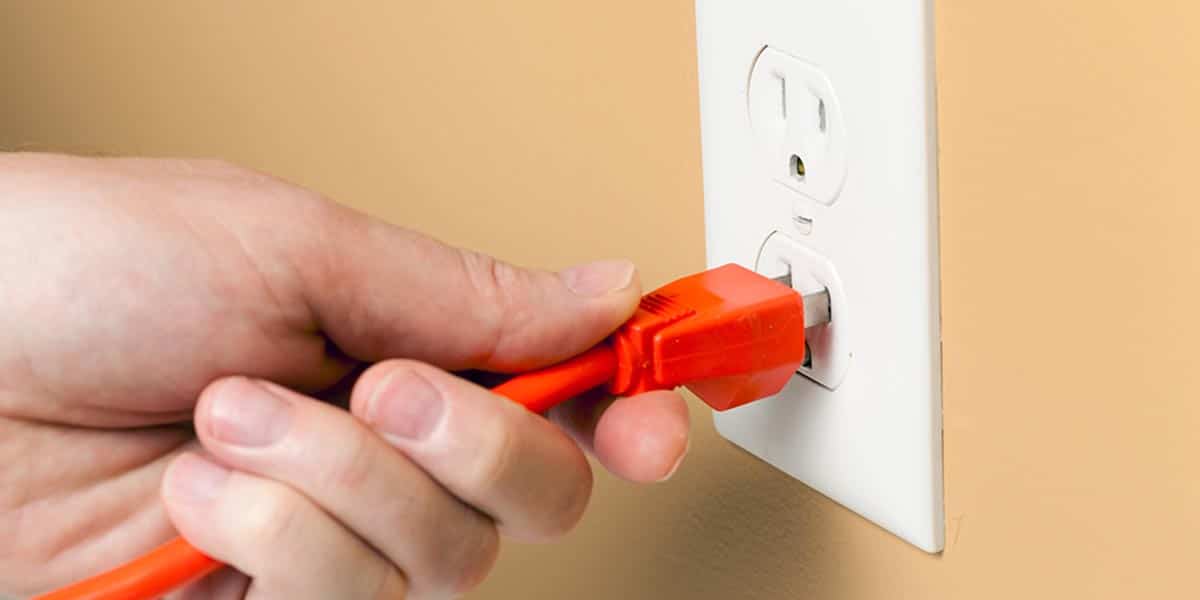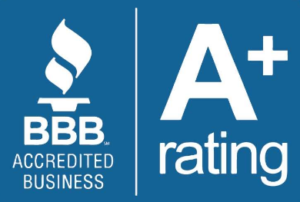Last updated on December 7th, 2021 at 05:46 pm
For something as scientific as electricity, dealing with a faulty outlet can be surprisingly difficult. All the different wires going every which way and connected to who knows what. If you’re not sure what you’re doing, it can be confusing, and more than a little stressful.
Thankfully, it doesn’t have to stay that way. All it takes is a little bit of understanding of what’s going on behind the outlet, and some of the common problems (and their fixes).
So is your electrical outlet not working? Probably not, or you wouldn’t be reading this! Let’s take a look at how the outlets actually work, where they usually fail, and how we can fix them.
Anatomy of an Outlet
The first thing we need to understand before we diagnose and fix our outlet is how they work in the first place. There are a few different types of outlets. You’ve seen them before; some have three prongs, some have two.
They look different, but for the most part, they all work largely the same as each other.
The power comes from your power company, through the power lines, and into your breaker. The breaker distributes the power to different parts of your house through the wiring in your walls.
From there, things diverge a bit depending on if your outlet has two prongs or three prongs. The major difference between the two is grounding. In either case, the left outlet hole is what’s called the neutral slot. The prong that goes in there completes the circuit between the breaker and the outlet, allowing power to flow.
The right prong, meanwhile, is called the hot plug. This is the one that takes the power from the outlet and transfers it into your device.
The difference is in that bottom prong that’s only found in three-pronged outlets. This is what’s called the grounded part of the outlet. In three-pronged plugs and outlets, the bottom prong connects to a grounding device, which neutralizes dangerously high voltages that may be present.
Outlets with two prongs lack a ground. These kinds of outlets are becoming increasingly rare. In fact, if you see one mounted in the wall of a home or building, that’s a good sign that it’s an older structure. Three-pronged outlets are usually required by law these days.
The grounding serves to protect your appliance from electrical surges, and you from getting shocked. These safety reasons are why two-pronged outlets are on the decline.
Why Is the Electrical Outlet Not Working?
We’ve talked a little about how electrical outlets work. Now we can take a look at fixing some of the most common issues.
1. The Slot is Worn Out
Probably the most common reason for a failing outlet has nothing to do with the actual outlet itself. The wiring is fine. Rather, it’s the mounted frame around it that’s failing. As your mount ages, the plug slots become worn down or become rough and jagged.
This can make it difficult to plug your device in and to get a good connection with the circuit. This leads to an unstable power supply from the outlet.
The solution to this is simply to kill the power to the outlet, remove the wall mount, and replace it with a new one. Mounts can be found for cheap in stores and online, so fixing this one shouldn’t break the bank.
2. You’ve Tripped a Breaker
Before you look at the outlet itself, you should check to see if you’ve tripped a breaker. Tripping a breaker isn’t the problem in and of itself. If something’s wrong with your outlet that caused a trip, resetting the breaker won’t fix the problem on its own.
However, knowing that the breaker has been tripped is valuable information. Some types of problems that outlets can have are more likely to lead to a tripped breaker than others.
If you know going into it that the problem is causing a tripped breaker, it makes it much easier for you, or a professional, to narrow down potential causes before looking at the outlet itself.
3. Your Wire Connections are Loose
This one is a little more technical, but still nothing too difficult to solve. If you’re experiencing power issues with a specific plug, and the frame is in decent condition, this should be the first thing you check for.
Unscrew the frame and look at the actual circuit within your wall. Check the connection of your wires to the outlet. They may have come loose or even detached altogether.
This is another result of simple age and wear and tear. Heat generated by the electrical current causes reactions in the wires. They expand ever so slightly when a current is passing through them. Likewise, they contract a touch when the current is off.
This motion is imperceptible, but over time can loosen the connection of the wires to the outlet. To fix this, you simply need to re-secure the connections to your outlet. And make sure that your frame is solidly mounted as well. If the plug shifts in the outlet, it can cause this issue as well.
4. Improper Device Rating
A lot of people don’t realize that plugs, outlets, and other electronics are rated based on the voltage they generate or are capable of receiving. Household circuits are rated for either 15 or 20 amps of energy. Plugging the wrong rating into the outlet can cause serious issues.
If you plug an outlet receptacle that’s rated for 15 amps into a circuit rated for 20 amps, there’s no real danger. After all, the receptacle will only transfer 15 amps. However, some devices may function improperly, or not at all, because they’re not getting enough power.
However, doing the opposite can cause major problems. Plugging a 20 amp receptacle into a 15 amp circuit can be very bad. At best, you’ll blow a breaker. At worst, it can damage the wires in the circuit, and even lead to an electrical fire.
Always be aware of the rating for your receptacles and your circuits. If you’re unsure, get in touch with trained professionals like us. Whatever you do, be sure of the rating before using the outlet.
5. You Have a Short Circuit
Short circuits can do more than just shut down your outlet. They are one of the most common reasons for tripping a breaker, which affects power all throughout your home.
A short circuit is caused when part of the circuit connects with the ground where it isn’t supposed to. This can cause you to lose some or even all of your power in the circuit. This causes the breaker to trip.
Fixing a short circuit requires looking inside the outlet and finding where the accidental grounding is occurring. This can be a sub-problem of loose wire connections, so fixing this problem often goes hand in hand with fixing that one as well.
6. You Have an Open Circuit
An open circuit is when, for whatever reason, there is a point in your circuit where the electricity cannot flow through. This can happen for a variety of reasons. It can be the result of damaged wires, grounding, loose connections, and a number of other issues.
Resolving an open circuit requires you to look at the connections of the circuit within your wall to pinpoint the issue. This may require more professional work. That’s exactly what we’re here for.
7. You Have Reversed Polarity
This may sound like we’ve entered the realm of science fiction, but the reversed polarity is a very real problem that can occur in electrical circuits. We already discussed how outlets have a cold and hot connection within them, where the cold completes the circuit and the hot transfers the power to your device.
Reversed polarity is when these two connections get switched somehow. This is a hard problem to spot. Usually, you won’t have any idea that there’s a problem until it’s already begun.
Spotting reversed polarity is also difficult. In order to tell, you’ll have to get a circuit tester that plugs into your outlet. This device will check the polarity of your outlet circuit for you. From there, the wire connections will have to be changed so that they lead to the correct connections.
Call Servicewise for Your Electrical Service Needs
It is always a problem when you have an electrical outlet not working. It can be hard to tell what’s wrong, and sometimes fixing it is more than you can handle. This information should make it easier to spot the problem.
It should also make it easier to tell when you need to contact professionals for help. It’s great to be able to fix the issue yourself, but some problems require professional work.
And when you need that, make sure you get in touch with us at Servicewise. We pride ourselves on excellent service to get you the best electrical fixes for your money.









